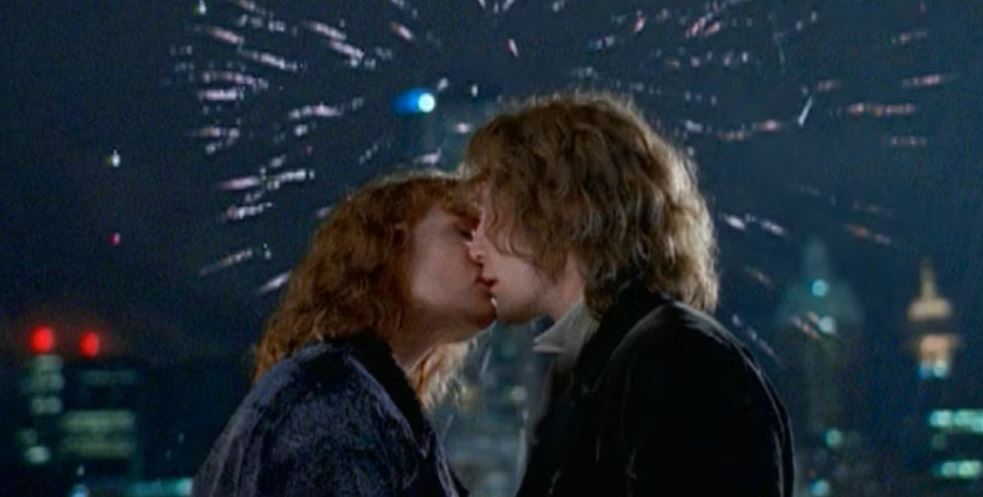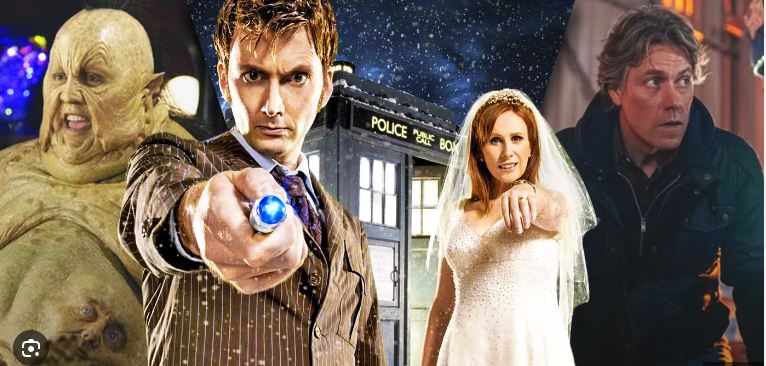Former Doctor Who showrunner Chris Chibnall shook up the franchise in a major way when he introduced the Timeless Child. This new secret piece of the Doctor’s history was first mentioned in the 2018 episode “The Ghost Monument” before being fully explained in 2020’s “The Timeless Children.” It changed everything fans thought they knew about the Doctor. It was revealed that the Doctor was actually a being of unknown origin, discovered beside a mysterious gateway into another universe or dimension. This surprising and unknown backstory displaced the Doctor’s previous origins as a Time Lord, born on Gallifrey. However, this wasn’t the first time the Doctor’s Time Lord heritage had been challenged on Doctor Who.
In 1996, Doctor Who returned after seven years on hiatus with a television movie, starring Paul McGann as the Eighth Doctor. The movie was originally intended to launch a brand-new series of Doctor Who, which McGann would lead. Things didn’t quite pan out that way, however. Doctor Who fans weren’t impressed by the movie’s new take on the classic sci-fi series and the changes it made to the Doctor. In the movie, McGann’s Eighth Doctor revealed that he was half human, on his mother’s side. This was perhaps the most significant retcon Doctor Who lore had ever seen.
The Timeless Child Ends Arguments That the Doctor is Half Human

The Timeless Child Made the Doctor More Alien, Reversing the Movie’s Failed Retcon
Up until Doctor Who’s short-lived 1996 revival, the Doctor had always referred to themselves as a Time Lord, never suggesting there was any trace of humanity in them. The only time it had been implied the Doctor might be human was during the era of the First Doctor, William Hartnell. While it was never explicitly stated that the Doctor was a human being, there were a few occasions on which the First Doctor and his companions were collectively referred to as humans, or on which the Doctor appeared to count himself among the humans with whom he traveled. This, however, was due to the fact that the series’ writers had not yet concocted the full details of the Doctor’s origin — the fact the Doctor was a Time Lord would not be revealed until the end of the Second Doctor’s era.
The Doctor Who TV movie saw the Seventh Doctor, played by Sylvester McCoy, regenerating into McGann’s Eighth Doctor after being gunned down in San Francisco. The regeneration was a prolonged and difficult affair, following the efforts of a medical team to save the Doctor’s life, while being unfamiliar with his alien biology. Following his regeneration, the Eighth Doctor struggled to remember who he was, until his memories started returning after the TARDIS’ power source, the Eye of Harmony, was opened by the Master. Upon opening the Eye, the Master discovered the Doctor was half-human. The Doctor later reasserted this when he met Professor Wagg at ITAR — the Institute for Technological Advancement and Research — from whom he planned to steal an atomic clock.
On its own, the Doctor’s claim that he was half-human on his mother’s side could have been easily dismissed as a lie, quickly concocted by the Doctor to distract Wagg so he could steal the atomic clock he needed to stop the Master. However, the Master looking into the Eye of Harmony and seeing the Doctor’s human retina seemed to offer more conclusive proof that the Doctor was, indeed, half-human. Some Doctor Who fans tried to explain this retcon away by suggesting the Eighth Doctor was human due to receiving a transfusion of human blood during the operation that cost the Seventh Doctor his life, with his reference to his “mother’s side” being a lie on the Doctor’s part. In the comic story, “The Forgotten,” the Doctor claimed he fooled the Master into believing he was human, using a malfunctioning Chameleon Arch.
While the reason for the Doctor’s retina appearing to be human remains unclear, the notion that the Doctor was half-human and half-Time Lord has been well and truly overwritten in Doctor Who canon. It’s possible that the Doctor did believe themselves half-human, perhaps having been adopted by a human mother and Time Lord father who posed as the Doctor’s birth parents. The Doctor’s true species, however, is unknown. The revelation that the Doctor was the Timeless Child, discovered by Gallifreyan explorer Tecteun at the boundary of another reality, means that the identities and species of their birth parents are a mystery even to the Doctor themselves. While the Time Lords genetically modified themselves to make themselves more like the Timeless Child, gaining the ability to regenerate, it is not known what differences still exist between the Doctor and the Time Lords, possibly explaining the Doctor having retinae that appear the same as a human’s.
The Timeless Child Isn’t the First Time Doctor Who Addressed the TV Movie

Doctor Who Previously Appeared Undecided on Whether the Doctor was a Full Time Lord or Not
The 1996 Doctor Who TV movie has been accepted as part of the series’ canon, despite causing controversy in the fan base and appearing to meddle with established continuity. The inclusion of McCoy’s Seventh Doctor and depiction of his regeneration into McGann’s Eighth Doctor tied the movie to the TV series’ continuity. Doctor Who’s 2005 revival would go on to confirm this connection, including images of the classic Doctors, with McGann among them. The Eighth Doctor featured prominently in one drawing in John Smith’s journal in the episode “Human Nature,” which saw the Doctor transformed into the human Smith, journaling his dreams of his Time Lord life. However, the question of whether the Doctor was actually half-human was largely ignored for much of the modern series, touched upon on only a couple of occasions.
The 1996 Doctor Who TV movie has been accepted as part of the series’ canon, despite causing controversy in the fan base and appearing to meddle with established continuity.
The original scripts for the Tenth Doctor’s final Doctor Who story, “The End of Time,” almost laid to rest claims that the Doctor was half-human on his mother’s side. The story featured a mysterious older woman, played by Claire Bloom, who kept appearing to the Doctor’s companion Wilfred Mott (Bernard Cribbins) to guide him through the Tenth Doctor’s final battle. The conclusion to “The End of Time: Part Two” revealed that this woman was a Time Lord — one of only two who stood opposed to Rassilon’s plan for the Ultimate Sanction, which would bring about the end of time. Originally, however, writer Russell T Davies had planned to reveal the Woman was the Doctor’s mother. This story was the last of Davies’ original run on Doctor Who, suggesting he planned to conclude his time on the series by finally laying to rest the notion that the Doctor had a human mother.
Davies’ successor, Steven Moffat, also addressed the TV movie’s assertion the Doctor was half-human on one occasion. Moffat, however, implied this shocking revelation may have been true. In Doctor Who Season 9, the Doctor was plagued by the legend of the Hybrid — a Time Lord legend that warned of the coming of a creature that was half-Time Lord and half-Dalek, which would stand in the ruins of Gallifrey and break a billion hearts to heal its own. The Doctor, however, said that the Time Lords were wrong to believe the Hybrid would be half-Dalek, as the Daleks would never allow such a creature to exist. He pointed out that the Hybrid was merely prophesied to be a combination of two warrior races.The immortal Ashildr proposed it might be the Doctor himself: half-Time Lord, half-human.
The Timeless Child Replaced One Doctor Who Controversy With Another

The Doctor’s New Origin Split Opinion, But it Works Where the TV Movie Failed
For years, the Doctor Who TV movie’s claim that the Doctor was half-human was the most controversial decision to hit the franchise. While introducing a new backstory for the Doctor as the Timeless Child finally laid to rest the notion that the Doctor might be half-human, this latest revelation was also divisive among fans. Some fans took issue with the notion of the Doctor serving a crucial role in the foundation of Time Lord society, though this was something the classic series of Doctor Who had started to tease in its final years, according to the so-called “Cartmel Masterplan.”
There was also a suggestion that it robbed the Doctor receiving a new regeneration cycle in “Time of the Doctor” of its power, even though it was possible the Time Lords had still imposed a regeneration limit on the Doctor after wiping their memories of their initial lives, meaning he genuinely did require new regenerations by the end of that story. Despite fans’ concerns over the Timeless Child, it serves the Doctor and Doctor Who far better than making the character half-human ever did. Over Doctor Who’s 60+ years on the air, many details of the Doctor’s backstory and of the Time Lords have been revealed.
Some fans took issue with the notion of the Doctor serving such a crucial role in the foundation of Time Lord society, though this was something the classic series of Doctor Who had started to tease in its final years, according to the so-called “Cartmel Masterplan.”
There has also been a trend for the Doctor to stand out among Time Lord society and among all other beings in the universe, often being portrayed as a legendary hero or warrior and becoming the subject of prophecies, such as the one concerning the Hybrid. Making the Doctor a member of an unknown species from another realm both restores mystery to the character, putting the “Who” back into Doctor Who, and offers some justification for their unique nature in time and space. By contrast, making the character half-human came across as an effort to explain away the Doctor’s fondness for humans, making it something more self-centered than the traditional depiction of the Doctor’s ability to recognize the uniqueness and beauty inherent in humanity.
